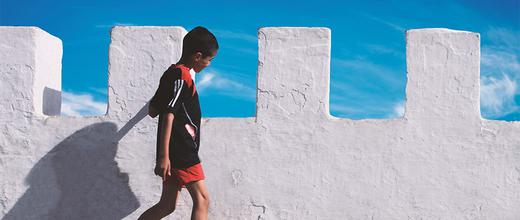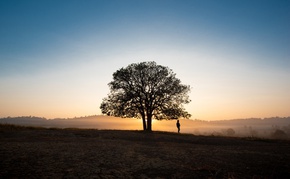The views expressed in our content reflect individual perspectives and do not represent the authoritative views of the Baha'i Faith.
The years between eleven and fourteen can be one of the hardest times in a person’s life. Not only do they physically change faster than ever, but their lives grow much more complicated, too.
School work gets harder, they begin to have more independence, and they find out who they are as a person.
At the same time, the depiction of this age group in the media and in society doesn’t help. They are told that they are just hormone-driven, insecure mini-teenagers. But if people really paid attention to junior youth, they would realize that this age group has a high level of receptivity to spiritual concepts like equality, justice and unity. Unfortunately, not many adults pay attention to that part of young people’s growth.
According to the Universal House of Justice, the democratically-elected international leadership body of the Baha’i Faith:
While global trends project an image of this age group as problematic, lost in the throes of tumultuous physical and emotional change, unresponsive and self-consumed, the Baha’i community—in the language it employs and the approaches it adopts—is moving decidedly in the opposite direction, seeing in junior youth instead altruism, an acute sense of justice, eagerness to learn about the universe and a desire to contribute to the construction of a better world. – Message to the Baha’is of the World, 2010.
The junior youth empowerment program is a Baha’i-inspired activity that seeks to help junior youth (preteens, tweens … whatever you want to call the ages between 12 and 15) keep that part of their intellect and wonder vibrant, and act on their wishes to make this world a better place.
This free program consists of two parts. On the one hand, junior youth study a series of books that concentrate on developing the ability to think critically, and explore the qualities necessary to become agents of change. On the other hand, they organize service projects, depending on what the junior youth are passionate about, and the needs of their community.
A older person called an “animator” moderates these gatherings, and helps the junior youth study the written material and plan their community service projects.
I never got to participate in this program as a junior youth myself, since it did not become widespread until after I graduated from high school. But I did go through the training for animators, which meant that we studied all the books for the program with other animators-in-training, and with each other’s help, we slowly gathered more and more families interested in joining the program.
Since then, I have served as an animator for two different groups in Chicago, and after I moved to New Zealand, I worked with two other groups in Auckland. It was a wonderful experience. Of course, there are always things that can drive even the most patient of animators crazy (and I admit, I am not one of the most patient). It is quite amusing to see these junior youth try to hide their cell phones from me so they can text or surf the internet. Listen, junior youth: your animators come from the time when cell phones were first popular among young people. We not only know all the tricks to hide our cell phones, we INVENTED them!
But with the junior youth, their spirit of service always shone through. In Auckland, the junior youth wanted to work with the homeless, or volunteer at a hospital or animal shelter. However, a legal issue prevented those options. For all these activities, a person had to be at least 16 years old to participate, even on a volunteer basis.
So how could I keep their spirits high as an animator? While we were on the phone with different organizations, you could hear their wonder and gratitude that these kids wanted to do something productive with their free time and help others. But they were not allowed to—which is understandable. The law prevented people under a certain age from working for these kinds of organizations for health and safety reasons. Still, it hurt to see my junior youth’s disappointed faces.
This age group really wants to help people. Their desire to serve isn’t something implanted in their brain by an outside source—it has been there from the beginning. My job as an animator was to expand on this want and make it into a reality.
Thankfully, there were other service projects we could carry out. We volunteered at a soup kitchen, and raised money for an ambulance service by making sausage sizzles and cookies. Despite the challenges, the ideas kept coming, and we organized some amazing service projects.
This program, offered all around the world, has proven itself as an amazingly effective resource for junior youth, animators, parents and communities. Junior youth and animators of all different backgrounds can take part or start a group—not just Baha’is:
For any person, whether Baha’i or not, his youthful years are those in which he will make many decisions which will set the course of his life. In these years he is most likely to choose his life’s work, complete his education, begin to earn his own living, marry, and start to raise his own family. Most important of all, it is during this period that the mind is most questing and that the spiritual values that will guide the person’s future behavior are adopted. – The Universal House of Justice, December 2015.
Now the members of one of my junior youth groups have all turned 15, which means they’ve graduated from the program and can continue on to the next step: study circles. This Baha’i-inspired program for older youth and adults explores deep spiritual topics like what happens after death, the meaning of religion, and the benefits of a life of ongoing service to humanity. Even though they are getting older, they still and always will serve their communities.

















Comments
Sign in or create an account
Continue with Facebookor